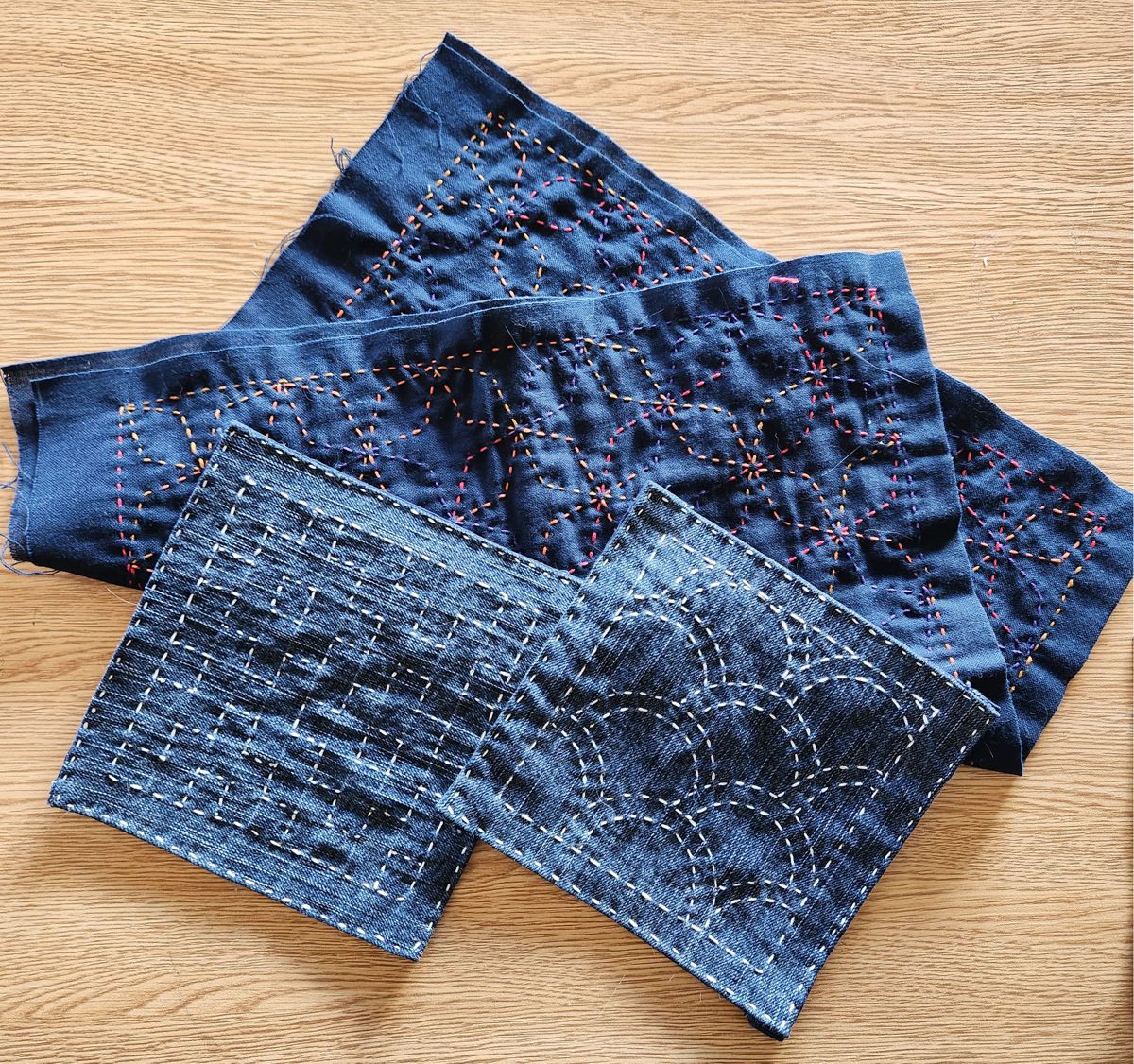
Sashiko is a form of decorative stitching that originated in Japan over 400 years ago. The term “sashiko” translates to “little stabs,” reflecting the small stitches that are characteristic of the work. It developed as a practical technique used by Japanese farmers and fishermen to reinforce and repair worn-out clothing and textiles, particularly in the cold climates of northern Japan. In these communities, resources were often scarce, and people needed to make the most of what they had. The dense stitching enabled them to extend the life of their garments, while embodying principles of frugality and resourcefulness.. These humble beginnings have imbued Sashiko with a deep cultural significance: it is perceived to be an art that symbolises perseverance, thrift, and the value of mending and reusing.
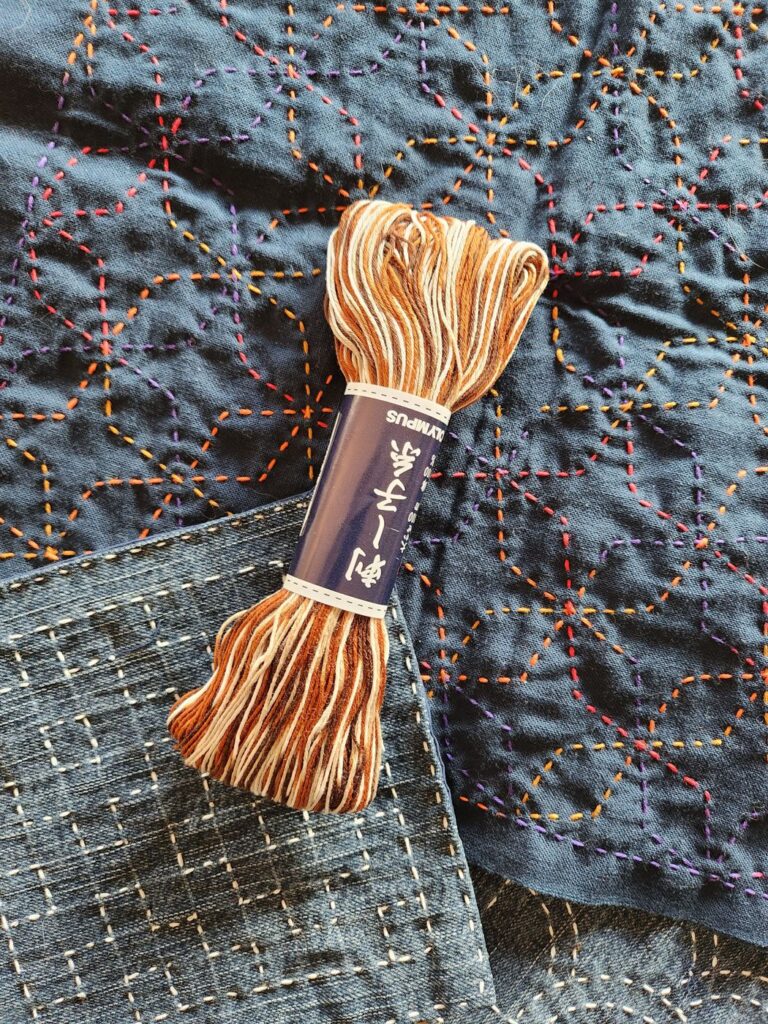
It also embodies the Japanese concept known as “wabi-sabi,” which celebrates the beauty of imperfection and impermanence. Rather than hiding flaws, sashiko highlights them, becoming a part of the garment’s story through its visible stitching and the equally visible repairs it creates. This philosophy is deeply ingrained in Japanese culture and resonates with the values of humility and acceptance.
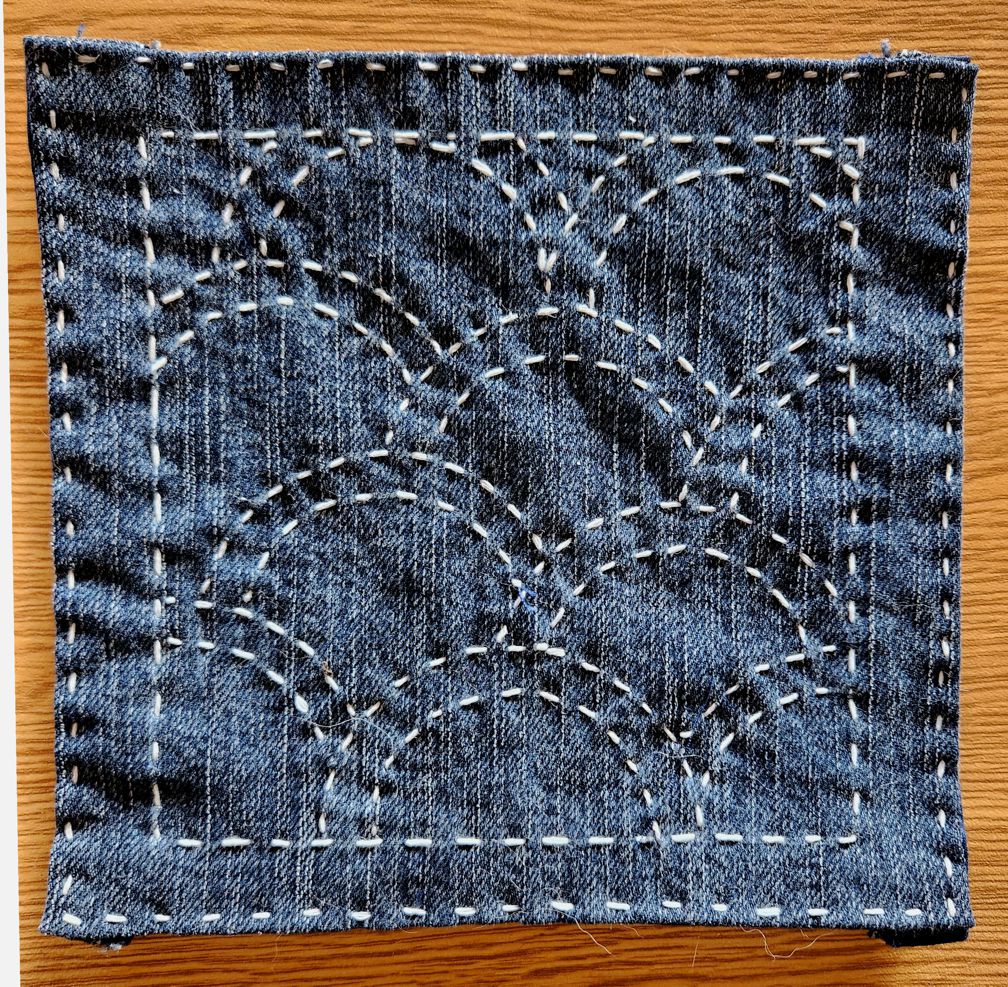
Initially, the techniques was used to strengthen garments, making them more durable and warmer by stitching layers of fabric together. By attaching patches to clothing, the fabric was strengthened, so sashiko was also used to reinforce protective garments, such as the jackets of local firefighters, which were made using many layers of cloth.. Over time, it evolved from utilitarian practice into a form of decorative embroidery. By the 18th and 19th centuries, it had become became popular among the Japanese upper classes as a way to embellish clothing and household items.
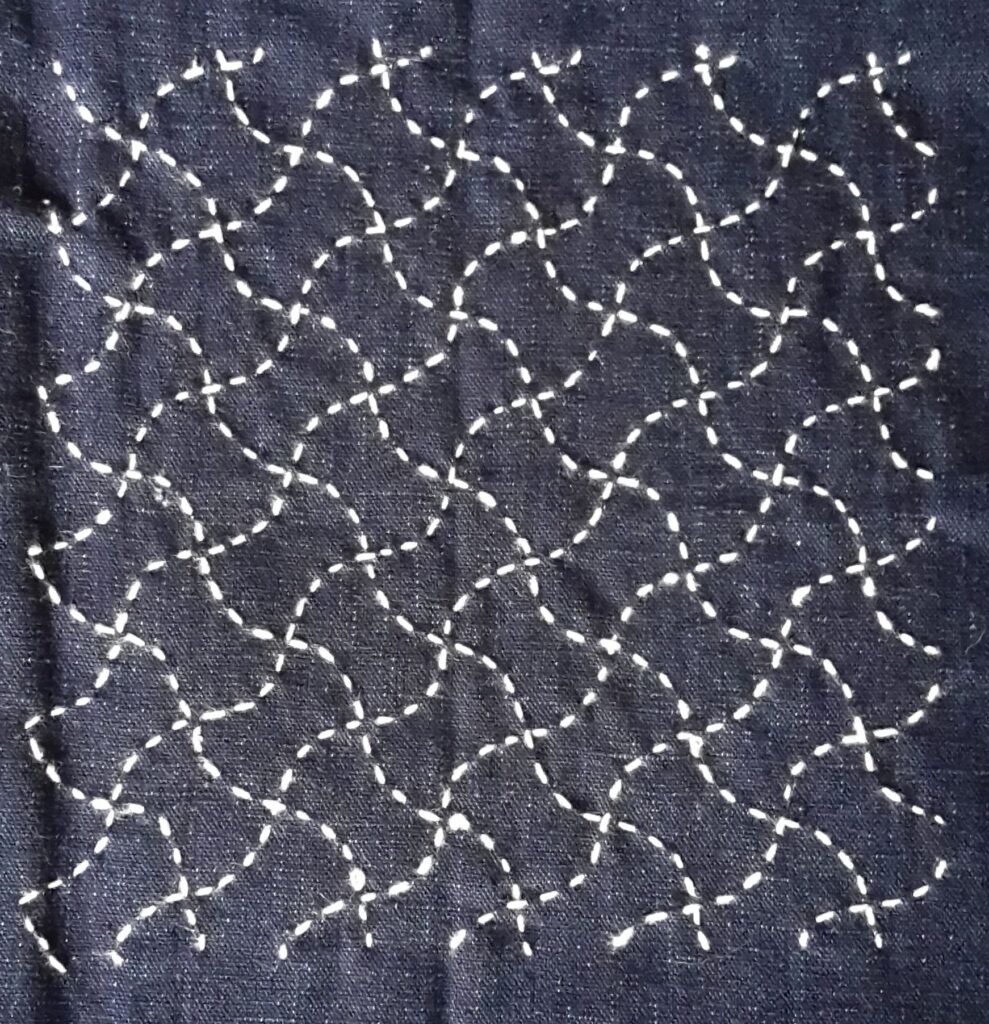
Because of the relatively cheap nature of white cotton thread and the abundant nature of cheap, indigo-dyed blue cloth in historical Japan, historical sashiko is generally perceived as white-on-blue, or blue on blue, embroidery. Contemporary sashiko typically incorporates traditional stitching patterns and motifs, but textile artists also experiment with new designs and colour palettes, blending the old with the new. Some are even incorporating sashiko stitches into mixed-media artworks or combining them with other embroidery styles.
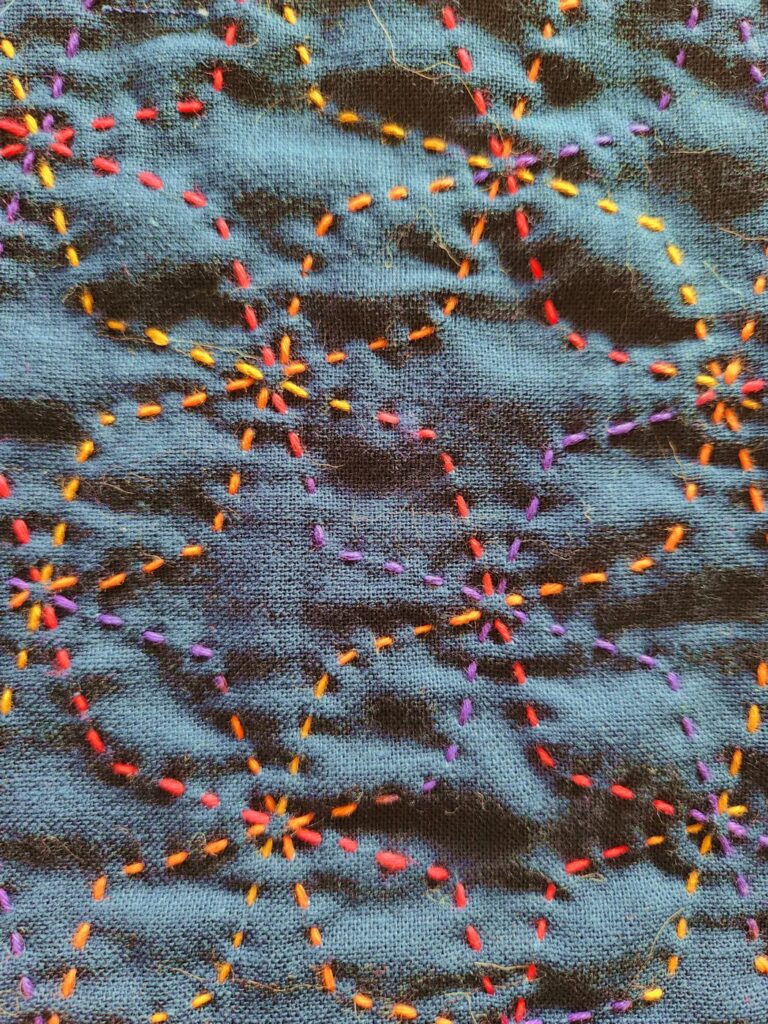
Sashiko embroidery is traditionally applied with the use of specialist needles and thread, though modern day sashiko may use modern embroidery threads and embroidery needles. It uses simple geometric patterns that falling into two main styles; moyōzashi (pattern sashiko), in where curved or straight lines of running stitch change directions to make larger patterns, but the stitches do not cross; and hitomezashi (one stitch sashiko), where the pattern emerges from the alignment of single stitches made on a grid. Some designs have been inspired by nature or folklore, representing waves, mountains, bamboo, feathers, pampas grass and so on – while others have developed as aesthetically pleasing designs using interlocking geometric shapes.
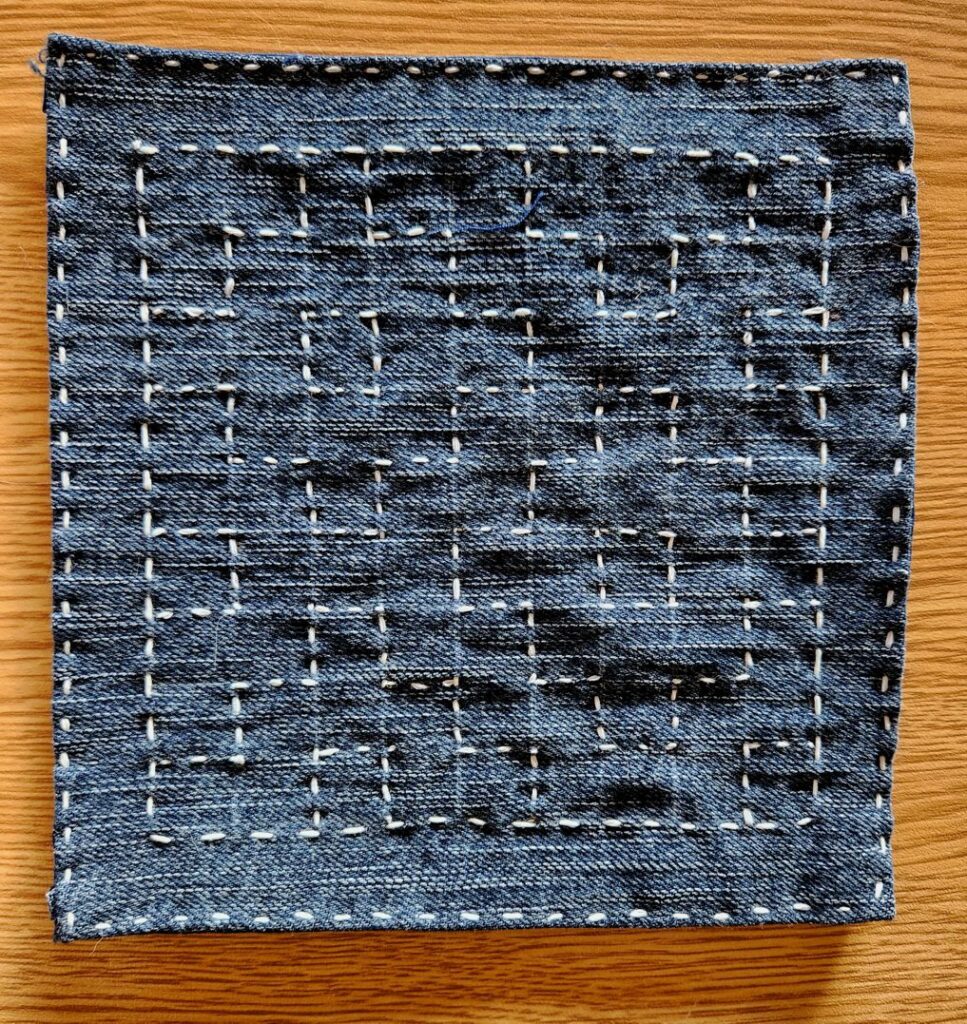
It is a technique celebrated for its simplicity, elegance, and cultural heritage. It has gained popularity worldwide among crafters and textile artists who appreciate its aesthetic appeal and meditative stitching process.
Because it was developed for the patching and reinforcing of clothing, sashiko is usually worked using a minimum of two layers. This can enable the start and ending threads to be hidden, and pieces can be reversible, with the back appearing as neat as the front – but this isn’t compulsory! Modern pieces may be stitched on a single layer and then backed, be worked over two or three layers of fabric, or can incorporate a layer of wadding, depending on the purpose of the finished piece. It is still a popular way of decorating clothing, bags, and other household items.
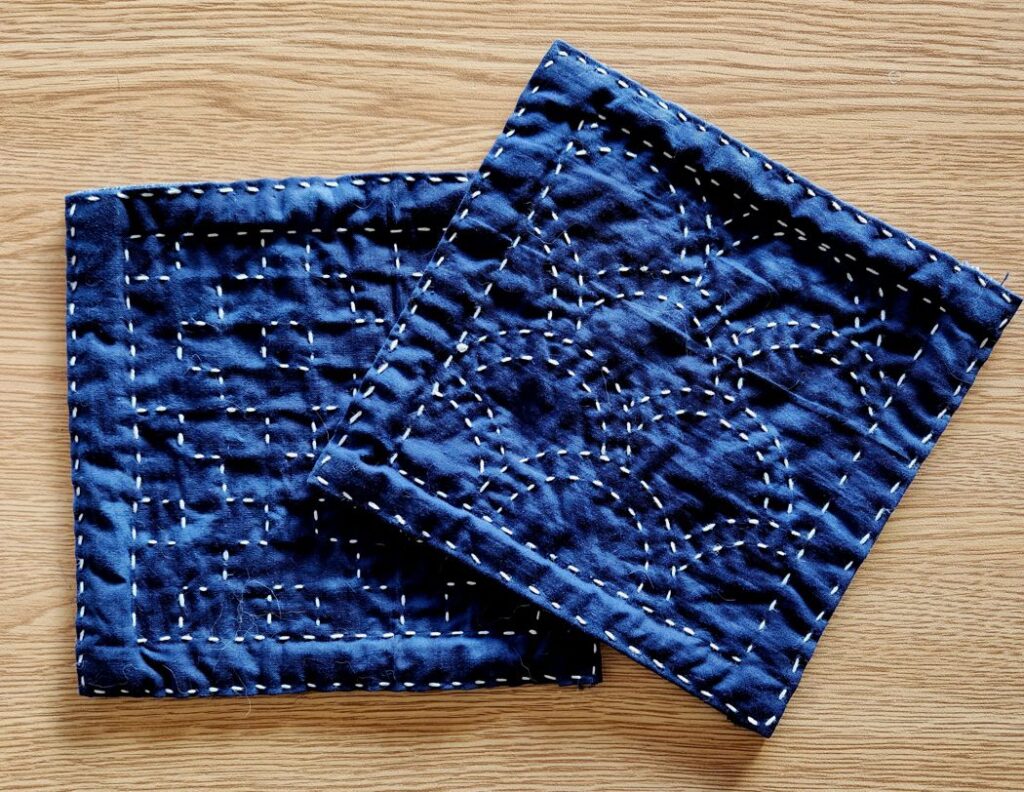
Sashiko continues to thrive as a versatile and culturally rich form of embroidery, bridging the gap between tradition and innovation while preserving its historical roots. It embodies a rich tapestry of cultural values and practices in Japan, from thrift and resourcefulness to mindfulness and community. Its significance extends far beyond the realm of embroidery, touching upon themes of tradition, spirituality, and the beauty found in simplicity and imperfection. Its timeless appeal and enduring popularity ensure that it will remain a cherished art form for generations to come.
Samples stitched by Penny Hill
